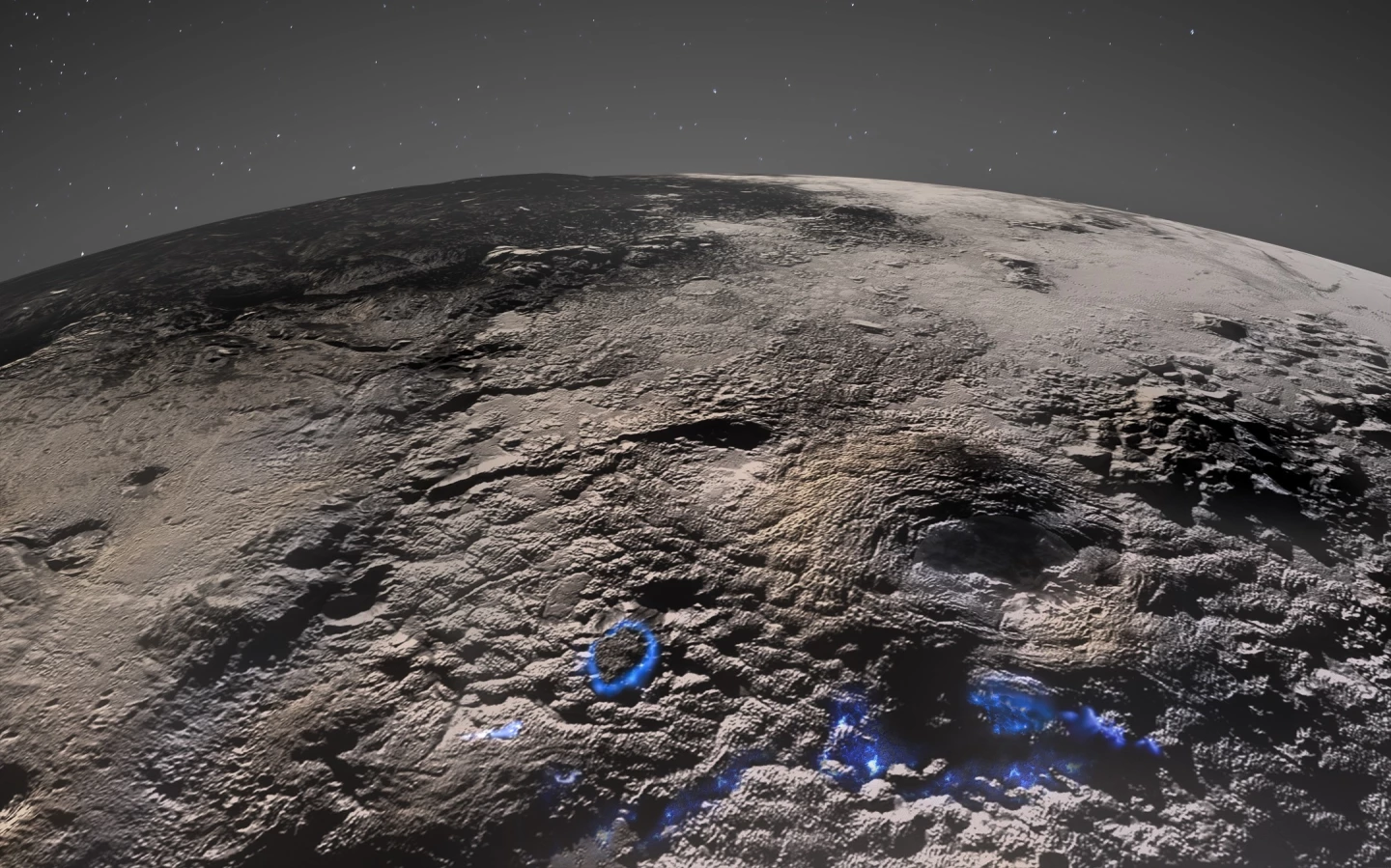Astronomers claim to have discovered evidence of huge ice volcanoes that have changed the surface of Pluto relatively recently. Data and images gathered by the New Horizons mission revealed surface structures that seem to have been produced by a phenomenon known as cryovolcanism, of a type and scale not seen elsewhere in the solar system.
In 2015, the NASA probe New Horizons whizzed past Pluto, giving us an unprecedented close-up view of the distant dwarf planet. Years later and that data is still providing new insights, as shown by this new study led by scientists at the Southwest Research Institute.
One of the most attention-grabbing areas was the heart-shaped icy plains, known as Sputnik Planitia – but the region that caught the eye of the researchers on this study lay to the southwest. There, several large domes rose above the landscape, between 1 and 7 km (0.6 and 4.3 miles) tall and 30 to 100 km (18.6 to 62 miles) wide. Some of these domes have merged with each other, and the largest structures housed “hummocky” terrain, meaning it was covered in an irregular pattern of hills, mounds and depressions.

This kind of geology, the team says, is suspiciously similar to that produced by cryovolcanism. This phenomenon is very similar to the familiar volcanism, only instead of hot, molten rock, it involves slushy liquids of ice, water and ammonia. It's been observed on other chilly solar system bodies, like Saturn's moon Enceladus and the dwarf planet Ceres, and this region of Pluto has previously been suspected of it. But the new study provides more evidence, showing that cryovolcanism may be reshaping the surface.
“The particular structures we studied are unique to Pluto, at least so far,” said Dr. Kelsi Singer, lead author of the study. “Rather than erosion or other geologic processes, cryovolcanic activity appears to have extruded large amounts of material onto Pluto’s exterior and resurfaced an entire region of the hemisphere New Horizons saw up close.”
The team says that because the region is almost totally clear of craters, it must be fairly young in geological terms. But that just raises new mysteries – cryovolcanism requires some heat to keep the material in a slushy state, but Pluto was expected to be a frozen wasteland. The scientists hypothesize that Pluto’s interior must have either had more heat in its past, or was able to hold onto it for longer, than previously thought.
“One of the benefits of exploring new places in the solar system is that we find things we weren’t expecting,” said Singer. “These giant, strange-looking cryovolcanoes observed by New Horizons are a great example of how we are expanding our knowledge of volcanic processes and geologic activity on icy worlds.”
The research was published in the journal Nature Communications.
Source: Southwest Research Institute





